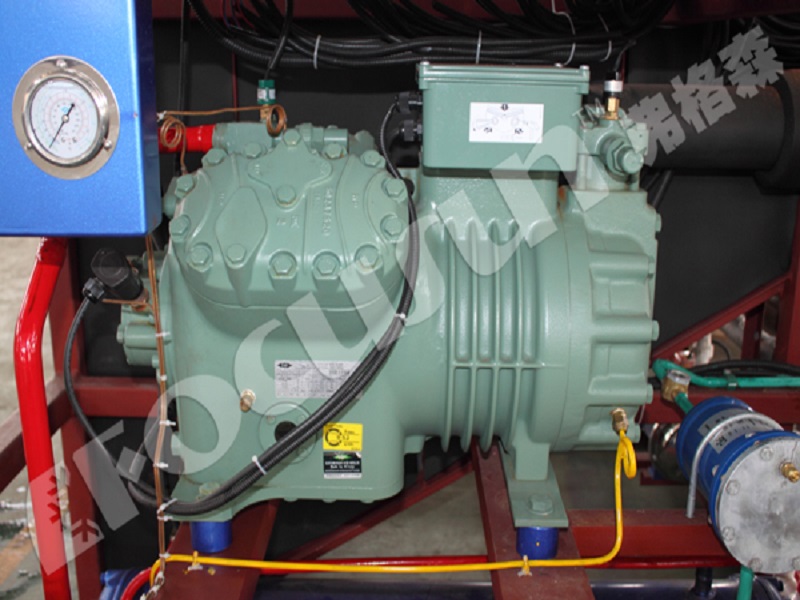13
2018

Advantages and Disadvantages of Each Compressor Type
Advantages and disadvantages of any compressor are based on its characteristics and application.
Advantages and disadvantages listed below are for a typical compressed air system in an industrial plant. The estimated full‐load bhp requirement of each compressor type at 100 psig discharge pressure at the compressor, a main drive motor typical efficiency of 92 percent and 0.746 kilowatts (kW)/bhp, the approximate operating costs of operation are obtained.
Single‐Acting, Air‐Cooled Reciprocating Air Compressors
Advantages include
- Small size and weight
- Generally, can be located close to point‐of‐use avoiding lengthy piping runs and pressure drops
- Do not require separate cooling systems
- Simple maintenance procedures.
Disadvantages include:
- Lubricant carryover as piston rings wear, which should be avoided
- Relatively high noise
- Relatively high cost of compression
- Generally, are designed to run not more than 50 percent of the time, although some can be at 80
- percent
- Generally, compress and store the air in a receiver at a pressure higher than required at the point‐of
- use. The pressure then is reduced to the required operating pressure but without recovery of the energy
- used to compress to the higher pressure.
- Operating Efficiency: 22 to 24 kW/100 cfm*
Double‐Acting, Water‐Cooled Reciprocating Air Compressors
Advantages include:
- Efficient compression, particularly with multi‐stage compressors
- Three‐step (0‐50‐100 percent) or five‐step (0‐25‐50‐ 75‐100 percent) capacity controls, allowing
- Efficient part‐load operation
- Relatively routine maintenance procedures.
Disadvantages include:
- Relatively high first cost compared with equivalent rotary air compressors
- Relatively high space requirements
- Lubricant carryover on lubricant cooled units
- Relatively high vibrations require high foundation costs
- Seldom sold as complete independent packages
- Require flywheel mass to overcome torque and current pulsations in motor driver
- Repair procedures require some training and skills.
- Operating Efficiency: 15 to 16 kW/100 cfm*
Lubricant‐Injected Rotary Screw Compressors
Advantages include:
- Compact size and complete package
- Economic first cost
- Vibration‐free operation does not require special foundation
- Part‐load capacity control systems can match system demand
- Routine maintenance includes lubricant and filter changes.
Disadvantages include:
- Less efficient full‐ and part‐load operation compared with water‐cooled reciprocating air compressors
- Lubricant carryover into delivered air requires proper maintenance of air/lubricant separator and the lubricant itself.
- Operating Efficiency:
18 to 19 kW/100 cfm, single‐stage*
16 to 17 kW/100 cfm, two‐stage*
Lubricant‐Free Rotary Screw Air Compressors
Advantages include:
- Completely packaged
- Designed to deliver lubricant‐free air
- Do not require any special foundations.
Disadvantages include:
- Significant premium over lubricant‐injected type
- Less efficient than lubricant‐injected type
- Limited to load/unload capacity control and VSD
- Higher maintenance costs than lubricant‐injected type over the life of the machine.
- Operating Efficiency: 18 to 22 kW/100 cfm*
Centrifugal Air Compressors
Advantages include:
- Completely packaged for plant or instrument air up through 500 hp
- Relative first cost improves as size increases
- Designed to deliver lubricant‐free air
- Do not require any special foundations.
Disadvantages include:
- Limited capacity control modulation, requiring unloading for reduced capacities
- High rotational speeds require special bearings, sophisticated monitoring of vibrations and clearances
- Specialized maintenance considerations.
- Operating Efficiency: 16 to 20 kW/100 cfm*
* By taking the estimated full‐load bhp requirement of each compressor type at 100 psig discharge pressure at the compressor, a main‐drive motor with a typical efficiency of 92 percent and 0.746 kW/bhp, the approximate efficiencies are obtained.
Contacts & Support
Focusun Refrigeration CorporationRoom 603, Baohong Center
No. 7755 Zhongchun Rd
Shanghai CHINA
ZipCode: 201100
Tel: +86-21-5108 9946
Fax: +86-21-5227 2259
Email: enquiry@focusun.com
Sales: sales@focusun.com
Marketing: marketing@focusun.com
Press: press@focusun.com
Newsletter: newsletter@focusun.com









